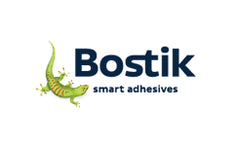Essential Tools for Working with Wood Screws: A Complete Guide
From manual screwdrivers to impact drivers, pilot and countersink bits, lubricants, storage and extractors — everything you need for clean, secure fixings in wood.
Whether you’re assembling furniture, fixing decking, or building a timber frame, you’ll almost certainly rely on wood screws. The right tool makes screw driving faster, cleaner and more reliable; the wrong tool leads to cam‑out, split timber and stripped heads. This guide covers the essential tools for working with wood screws and how to choose the correct setup for every job.
1) Screwdrivers
Manual screwdrivers are simple, precise and still indispensable for delicate work. Keep the core tip types to hand:
Common Tip Types
- Slotted (Flathead) – Traditional; useful for vintage hardware but easy to slip off the head.
- Phillips (PH) – Cross; self‑centres for better control.
- Pozi (PZ) – Phillips with extra ribs; standard on many modern woodworking screws (PZ2 is most common).
- Torx (T/Star) – Excellent torque transfer and very low cam‑out; popular for decking and structural screws.
Manual vs Powered — When to Choose Manual
- Delicate tasks like fitting brass hinges or adjusting cabinet hardware.
- Tight spaces where a drill won’t fit or risks damaging the surface.
- Final snugging after using a drill so you don’t overdrive the head.

2) Power Drivers & Drills
For most projects, a cordless drill/driver is the workhorse. An impact driver adds compact power for long or heavy‑duty screws.
Cordless Drill/Drivers
- Variable speed lets you start slowly to engage the bit, then accelerate.
- Clutch (torque ring) protects the work by slipping before overdriving.
- Swap between drill and drive modes for holes and screws with the same tool.
Impact Drivers
- Use rotational blows to deliver very high torque with less wrist strain.
- Ideal for decking screws, coach screws and long structural fixings.
- Compact body helps in awkward corners and between joists.
Choosing the Right Torque
Set a lower clutch number for softwoods and small screws; increase gradually for hardwoods and longer screws. Stop as soon as the head seats flush—then, if needed, finish by hand.

3) Drill Bits & Driver Bits
Driver bits are consumables—quality matters. Use the correct head pattern and size:
- Pozi (PZ) – Common for carpentry screws; PZ2 is the everyday staple.
- Phillips (PH) – Widely used in general‑purpose screws.
- Torx (T) – Excellent grip for high‑torque driving (decking, structural).
- Hex – For some structural screws and bolts.
Accessories that Help
- Magnetic bit holders keep the screw on the bit—great for one‑handed work or overhead tasks.
- Depth stops or collars can control recess depth for repeatable results.
Quality vs Budget & Avoiding Cam‑Out
Cheap bits round off quickly and slip. Hardened steel or coated bits last longer and protect the screw head. Replace worn bits immediately—the tiny cost saves time and timber.

4) Countersink Bits
Countersinking creates a conical recess so the head sits flush or just below the surface for a cleaner look and less fibre tear‑out.
- Single‑flute – Simple, effective for occasional DIY use.
- Multi‑flute – Smoother finish for visible joinery.
- Combination drill & countersink – Pilot + countersink in one pass for speed and consistency.

5) Pilot Hole Bits
Pilot holes guide the screw, reduce splitting and make driving easier—especially in dense hardwoods and near edges.
Correct Sizing
- Hardwoods: Choose a bit just under the shank diameter. Example: for a 4 mm screw in oak, a 3 mm pilot is typical.
- Softwoods: Go smaller because fibres compress—e.g., 2.5–2.7 mm pilot for a 4 mm screw in pine.
- Very long screws: Consider a stepped or tapered pilot to reduce friction along the full length.

6) Screw Lubricants
Long screws into dense timber can bind. A little friction reduction makes a big difference and lowers the risk of snapping.
- Wax – Rub threads on a candle block; clean and reliable indoors.
- Soap – Works in a pinch, but may attract moisture; avoid for exterior work.
- Specialist screw lubricants – Formulated to reduce friction without affecting holding strength.
Use lubricants for coach screws, decking screws and seasoned hardwood. Wipe away any squeeze‑out before finishing.

7) Screw Storage & Organisation
Good organisation speeds up jobs and prevents using the wrong fastener.
- Compartment boxes sort by length, gauge and head type.
- Labelled jars keep bulk stock easy to see in the workshop.
- Magnetic trays stop screws escaping when you’re up a ladder or working on roofs.

8) Specialist Tools
- Socket wrenches / nut drivers – Best for large coach screws and bolts; pair with wax for easier driving.
- Right‑angle drill attachments – Let you drive screws where a drill won’t fit (inside cabinets, between studs/joists).
- Screw extractors – For stripped or snapped screws; drill a pilot for the extractor, then remove slowly at low speed.

Buyer’s Guide: Build the Right Setup
Everyday DIY Kit
- Cordless drill/driver with clutch and variable speed.
- Bit set: PZ1/PZ2/PZ3, PH1/PH2, T20/T25, magnetic holder.
- Pilot bits: 2.5 mm, 3 mm, 4 mm; combination countersink.
- Manual screwdriver (PZ2) for finishing and delicate adjustments.
Decking & Outdoor
- Impact driver for long decking/coach screws.
- Torx bits (T20/T25) with spares; magnetic holder.
- 3 mm & 4 mm pilots; multi‑flute countersink for neat finishes.
- Wax or specialist lubricant for dense/exotic timbers.
Comparison Table: Tools for Wood Screws
| Tool | Best For | Pros | Considerations |
|---|---|---|---|
| Manual Screwdriver | Delicate hardware, final snugging | High control, no risk of overdriving | Slow; tiring for long screws |
| Cordless Drill/Driver | All‑round drilling & driving | Versatile; clutch protects work | Larger body; less torque than impact |
| Impact Driver | Decking, coach, structural screws | Compact, huge torque, fast | Loud; use correct bits to avoid damage |
| Driver Bits (PZ/PH/T/Hex) | Matching screw heads | Correct fit reduces cam‑out | Wear out; replace when rounded |
| Countersink Bits | Flush or recessed heads | Cleaner finish; less fibre tear‑out | Adds a step if not using combo tool |
| Pilot Hole Bits | Hardwoods, near edges, long screws | Prevents splitting; straighter drive | Extra step; needs correct sizing |
| Lubricants | Dense hardwoods, long screws | Lower friction; less breakage | Wipe off before finishing |
| Extractors | Stripped/snapped screws | Salvage work without damage | Requires careful, slow drilling |
Final Word
The right combination of drivers, bits, pilot and countersink tools, plus simple helpers like magnetic holders and wax, transforms how easily and cleanly you can drive wood screws. Build a kit that suits the jobs you do most, and keep consumables like bits sharp and fresh.



















